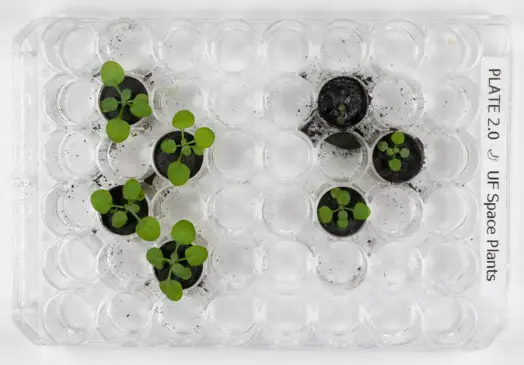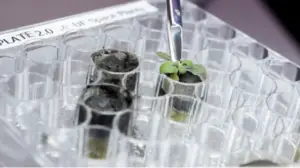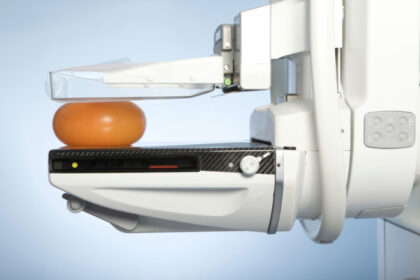Earth’s moon is located 238,900 miles away from our planet, if you fully believe NASA scientists, of course.
The moon is steeped in mystery, but scientists are learning more and more about it each year.
Recently, a strange connection between the moon and Earth was discovered by University of Oxford geologist Claire Nichols regarding the moon and its connection to our beautiful blue planet, about something surprising that supposedly happened 900 million years ago.
Now, scientists from the University of Florida have accomplished something here on Earth that could have major implications for the future of our moon colonization efforts.
Somebody get Elon Musk on the phone — there’s a lot of potential to build something great here.
Farming on the Moon Could Be the Next Big Thing
The NASA-funded study was published on May 12 in the journal Communications Biology by scientists from the University of Florida.
The scientists grew plants in soil collected from the moon.
The study is said to be an important milestone in NASA’s quest for human space exploration according to NASA administrator Bill Nelson. Its findings could have implications for growing plants in harsh locations on Earth.
It could also have a dramatic effect on the food system of the future.
If astronauts are to journey outward and complete missions deeper and deep into space, perhaps even to Mars, food developed on other celestial bodies could greatly support them on their missions.
“We’ll need to use resources found on the Moon and Mars to develop food sources for future astronauts living and operating in deep space,” Nelson said.
The Scientists Grew Cruciferous Vegetables on Space Dust

It may sound implausible, but soil from the moon is capable of growing edible plants according to the results of this study.
The UF researchers planted seeds of a plant in the cruciferous vegetable family, Arabidopsis thaliana, which is related to mustard greens, broccoli and cauliflower. The soil was sampled directly from the missions Apollo 11 (July 1969), 12 (November 1969) and 17 (December 1972).
Strangely enough, the plants grew, despite the unique composition of the lunar soil, which scientists described as “fine,” “powdery,” and sticky.
“It sticks to everything,” said research professor Anna-Lisa Paul in the Horticultural Sciences Department at the University.
Within days of planting, the seeds began to sprout.
“Ah! It’s so cool!” said University of Wisconsin–Madison astrobotanist Richard Barker about the experiment.
“Ever since these samples came back, there’s been botanists that wanted to know what would happen if you grew plants in them,” Barker added.
“But everyone knows those precious samples (from the Apollo missions) are priceless, and so you can understand why [NASA was] reluctant to release them.”
Could We Have a New Type of ‘Super Soil’ on Our Hands?

The scientists were surprised to learn how fast the plants grew.
Not only that, but all of the seeds successfully germinated.
“We planted them, walked away for a couple of days and then when we first went back in to take a look, it was amazing to see that every plant group, all the seedlings germinated,” Paul said.
Despite the initially successful outcome, researchers found that these plants did not grow well as those in traditional soil. These seeds did not grow as “robust” as those in the control group, and some plants in the sample group had “stunted” roots and leaves as well as “reddish pigmentation.”
The next step for researchers is to find out how to make the plants grow as well as those in the control group using lunar soil. Considering that the soil samples were taken from moon missions several decades ago, there is plenty of debate as to whether or not a fresher sample would change the outcome.
“Now that we have lunar soil that have been in contact with biology, we can begin to ask the question: how would you and how hard would it be to mitigate any of the adverse reactions that we saw?” said Robert Ferl, assistant vice president for research at the University of Florida, who authored the study.





